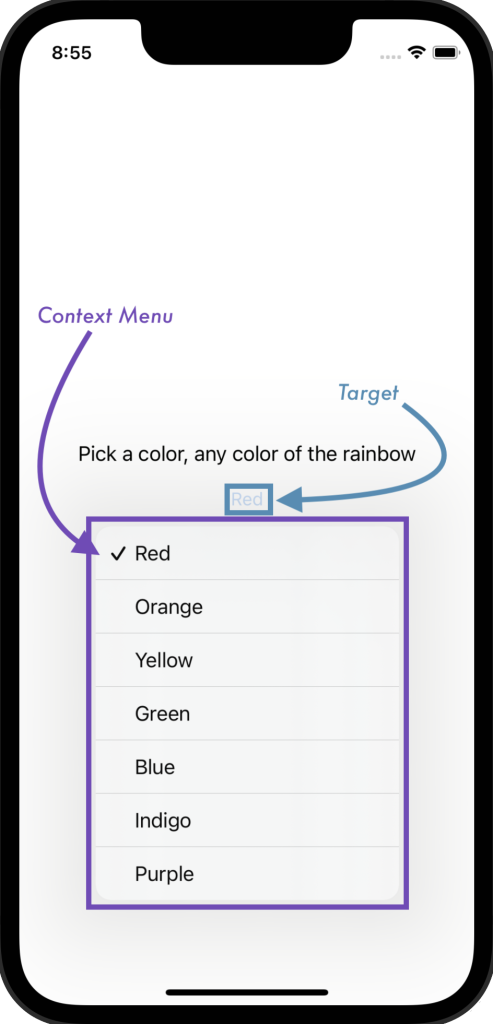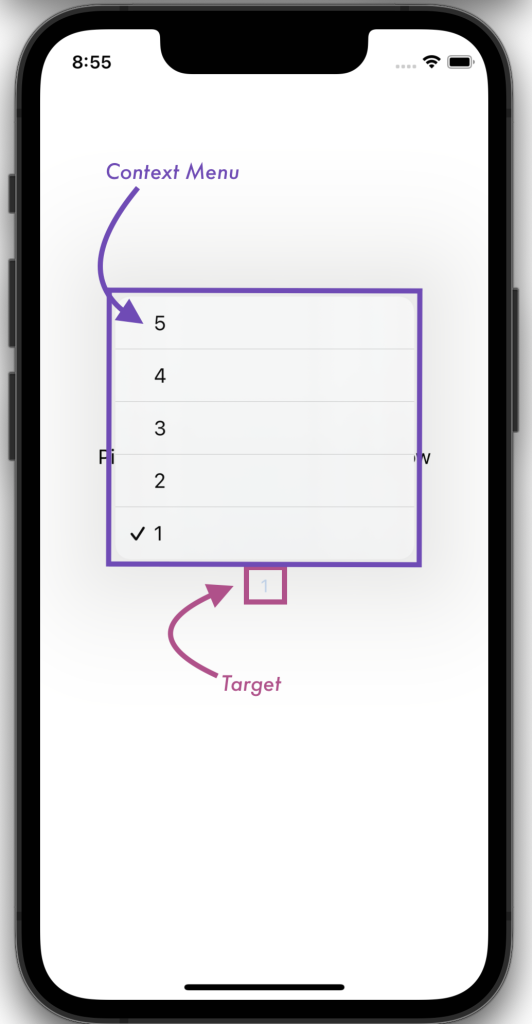Make sure you have installed the minimum package version: 1.17.0
If your LogRocket server is self hosted, mobile SDK version 1.17.0 requires a minimum server version of 16.462.0.
About Swift UI
The LogRocket SDK will work with SwiftUI in the same way as the existing iOS SDK outlined in these iOS docs, with the following known limitations.
SwiftUI Differences from UIKit
View Names
As with UIKit, LogRocket can automatically infer information about the view hierarchy in SwiftUI. Because views are defined declaratively in SwiftUI, which handles management of the rendered view hierarchy under the hood, automatically detected view selectors contain the more generic names of the underlying views that comprise the rendered interface, rather than custom SwiftUI View names or the SwiftUI Library names for declarative views. Manually tagged view names will be injected into these selectors, and searchable in LogRocket filters.
Custom view tags are added using the lrAddClass modifier, which takes a string value that is treated as the ID for a given View in its selector.
func lrAddClass(_ viewSelector: LocalizedStringKey) -> some ViewParameters
viewSelector
The string to be included in the View's recorded selector
Return Value
A view with an associated string detectable by the LogRocket SDK for selector generation
Navigation
As with UIKit, SwiftUI screens may not be meaningful on their own. As such, we recommend using the Manual Page Identification API to best track navigation events.
Individual view redaction
SwiftUI redaction accuracy and stability was improved in SDK version
1.56.0
The SwiftUI accessibilityIdentifier modifier cannot be used to apply redactionTags to individual private views, because the modifier does not apply the passed value to the views comprising the rendered application interface. Instead, our custom lrHide modifier can be used to mark SwiftUI Views for redaction.
// Definition
func lrHide() -> some View
// Example Usage
Text("Green").foregroundColor(.green).tag(Color.green).lrHide()Return Value
A view with an associated redaction indicator, which the LogRocket SDK uses to prevent the view's contents from being recorded.
Individual view allowlisting
Individual subviews of redacted SwiftUI Views can be allowed for view capture using our custom lrShow modifier
// Definition
func lrShow() -> some View
// Example Usage
// Label icon and first button are captured, label text and second button are not
ScrollView {
Label(title: {
Text("Hidden Label Text").lrHide()
}, icon: {
Image(systemName: "text.magnifyingglass")
}).lrShow()
Button("Allowed Button", action: {}).lrShow()
Button("Hidden Button", action: {})
}.lrHide()Return Value
A view with an associated allow indicator, which the LogRocket SDK uses to allow the view's contents to be recorded.
Limitations
SwiftUI PreviewsWe are aware of a compatibility issue with SwiftUI View Previews when importing LogRocket, and are working on resolving it. At this time, you can view previews locally by importing LogRocket conditionally on non-debug builds, or you can simply comment out LogRocket code when needing to view previews.
Sanitization and view tagging
While complete masking rules still apply, such as Automatically Sanitize Text and Sanitize Network Data,, there are current limitations with redacting individual views.
Container Views
Container view types do not comprise rendered views, and are instead strictly function as layout information for constructing the hierarchy of their contained views. Because of this, tagging and redaction added on a container view will be applied on all individual view within the container, instead of on the container itself. Container views include: Stacks (HStack, VStack, ZStack, LazyHStack, LazyVStack), Grids (Grid, LazyHGrid, LazyVGrid), Form, ForEach, Group, LabeleldContent, List, ScrollView, ViewThatFits.
Custom Views
In order to redact a custom SwiftUI View from session replay, lrHide must be applied inside of the body definition for the custom View. Applying the modifier to the invocation of the custom may not redact all contents of the custom View.
This same limitation also applies to manual view tagging. In order for all contents of a custom view to include the passed string in their recorded selectors, the lrAddClass must be applied inside of the custom view's body definition, not to the invocation of the custom view inside of another view's body
Example
struct LandmarkItem: View {
var landmarkName: String
var shouldHide: Bool?
func getBody() -> any View {
if shouldHide == true {
return (
ScrollView{
Image(landmarkName.lowercased())
Spacer()
Text(landmarkName)
}.padding(.horizontal).lrHide()
)
}
return (
ScrollView{
Image(landmarkName.lowercased())
Spacer()
Text(landmarkName)
}.padding(.horizontal)
)
}
var body: some View {
AnyView(getBody())
}
}
struct ContentView: View {
var body: some View {
VStack {
// INCORRECT
// This line redacts only part of the entire LandmarkItem view,
// the Text portion in this case
LandmarkItem(landmarkName: "Chincoteague").lrHide()
// CORRECT
// This line redacts the entire LandmarkItem by applying lrHide
// to the outermost SwiftUI library View, HStack in this case
LandmarkItem(landmarkName: "Umbagog", shouldHide: true)
}
}
}
AsyncImages
When redacting an AsyncImage, the lrHide modifier must be applied on the loaded image, as opposed to on the entire view. For example:
AsyncImage(url: URL(string: "https://example.com/image.jpg")) { image in
image
.resizable()
.lrHide()
} placeholder: {
ProgressView()
}Redacting Menus
When some Picker type elements are tagged to be hidden with lrHide, the SDK does not automatically redact the contents of the associated dropdown or menu overlay. The way these menus are rendered does not allow our SDK to associate these back with the view which was redacted. Redacting context menus requires the additional SDK.initialize configuration value redactMenus: true, and applies to the menus rendered by the following View types:
PickerwithpickerStyle(.menu)DatePicker
Examples
In the following view implementation, the target (outlined in teal) for the Color Menu view will always be redacted from session recordings, because the Picker view is modified with lrHide. The target for the Number Menu view, which uses pickerStyle(.menu), will not be redacted from session recordings.
When redactMenus: trueis included in the Configuration sent to SDK.initialize, both Context Menus will be redacted from session recordings (regardless of whether the Picker element by which they were generated has the lrHide modifier.
When redactMenus: falseorredactMenus is excluded from the Configuration, neither Context Menu will be redacted, despite the Picker element that generates the Color Menu being modified with lrHide.
var body: some View {
VStack {
Text("Pick a color, any color of the rainbow")
Picker("Color Menu", selection: $color) {
Text("Red").tag(Color.red)
Text("Orange").tag(Color.orange)
Text("Yellow").tag(Color.yellow)
Text("Green").tag(Color.green)
Text("Blue").tag(Color.blue)
Text("Indigo").tag(Color.indigo)
Text("Purple").tag(Color.purple)
}.pickerStyle(.menu).lrHide()
Text("Pick a number between 1 and 5")
Picker("Number Menu", selection: $number) {
Text("1").tag(1)
Text("2").tag(2)
Text("3").tag(3)
Text("4").tag(4)
Text("5").tag(5)
}.pickerStyle(.menu)
}.onAppear({
SDK.initialize(
Configuration(
appID: 'my-org/my-app',
redactMenus: true
)
)
})
}


